Vancouver
Vancouver Super AdminMaps of Vancouver show four corridors: Highway 99, Highway 91, Highway 17, and Highway 1, with travel time index (TTI) data color-coded for each corridor.
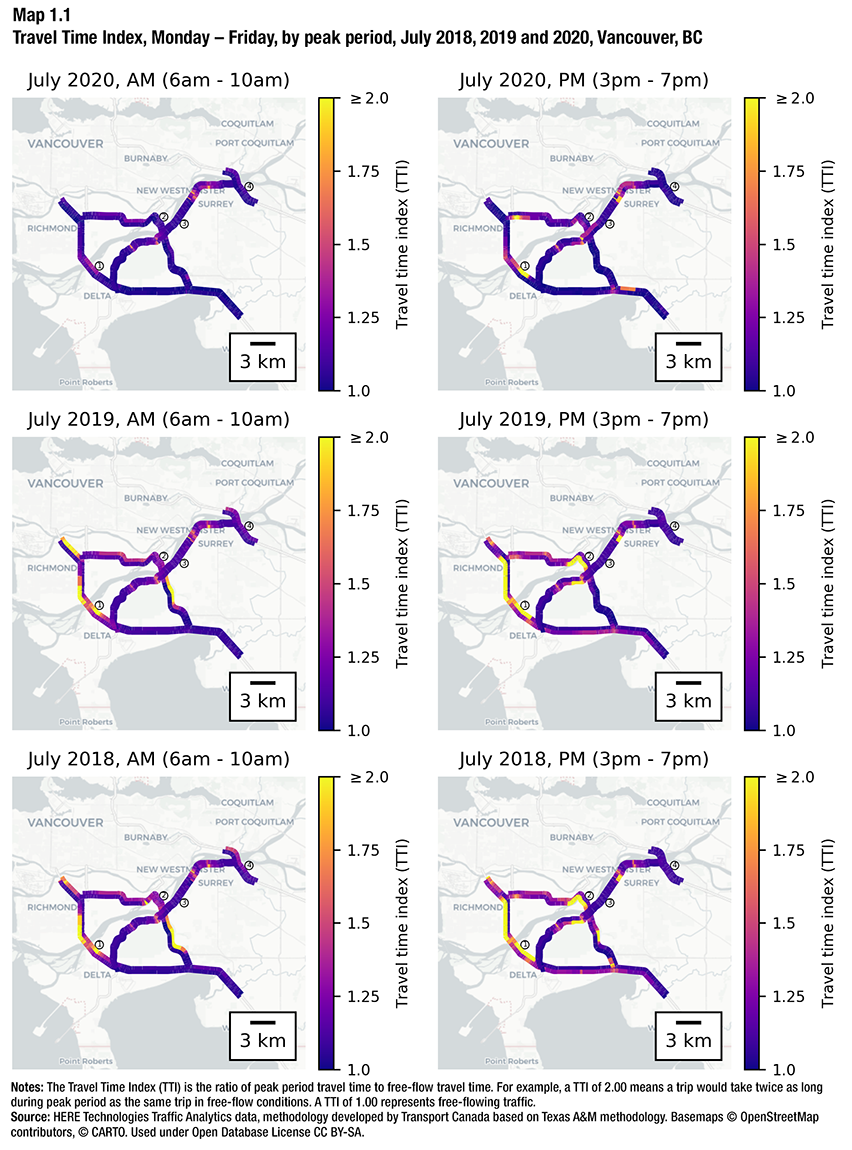
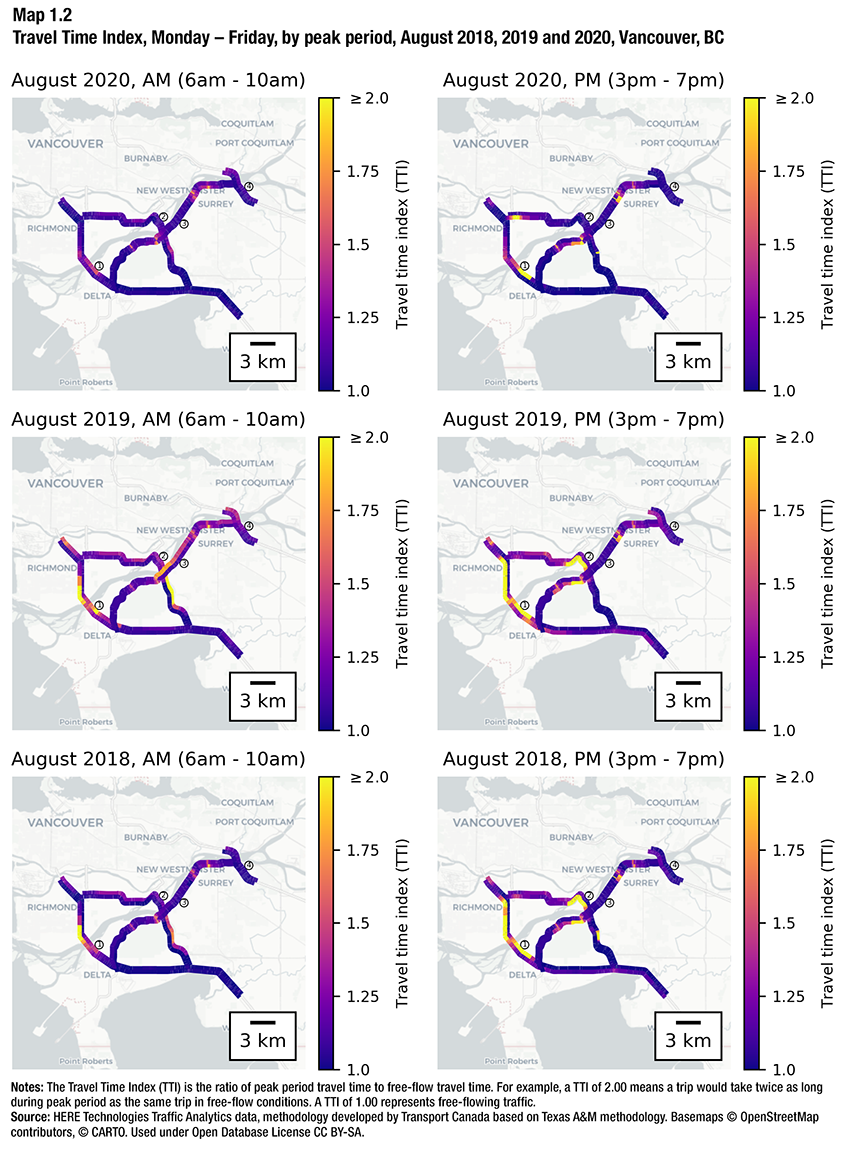
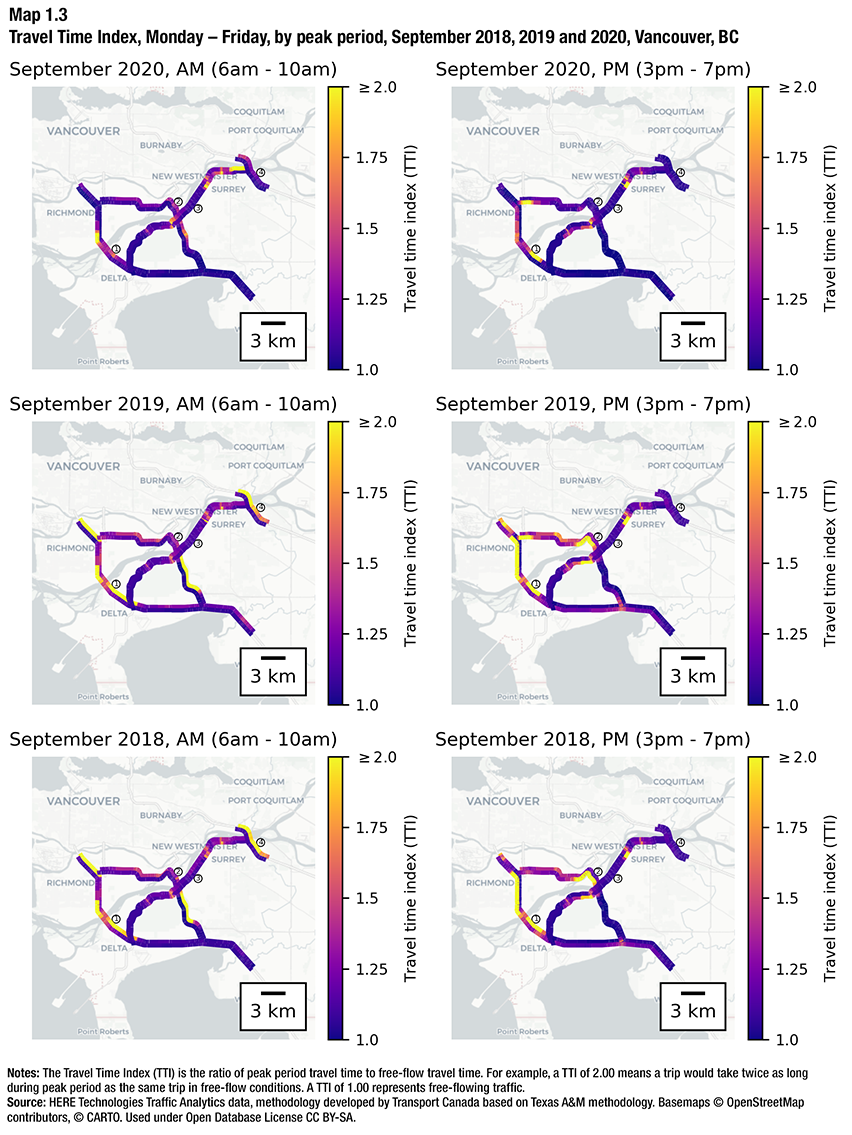
Description for Maps 1.1, 1.2 and 1.3
The maps of Vancouver each contain four corridors:
- Corridor 1 corresponds to highway 99 between Van Horne Way in the north and 32nd Avenue Diversion in the south. Its approximate length is 32 kilometres.
- Corridor 2 corresponds to highway 91 between No. 5 Rd in the north and highway 99 in the south. Its approximate length is 21.5 kilometres.
- Corridor 3 corresponds to highway 17 between highway 1 in the east and Ladner Trunk Rd in the west. Its approximate length is 24 kilometres.
- Corridor 4 corresponds to highway 1 between Fawcett Rd in the north and 160 St in the south. Its approximate length is 6 kilometres.
Each corridor is colour-coded to represent travel time index along its length. The dark purple colour represents a travel time index of 1.00 and the bright yellow colour represents a travel time index of 2.00 or greater. The aggregated corridor-level travel time index is shown in the table below.
Notes: The Travel Time Index (TTI) is the ratio of peak period travel time to free-flow travel time. For example, a TTI of 2.00 means a trip would take twice as long during peak period as the same trip in free-flow conditions. A TTI of 1.00 represents free-flowing traffic.
Source: HERE Technologies Traffic Analytics data, methodology developed by Transport Canada based on Texas A&M methodology. Basemaps © OpenStreetMap contributors, © CARTO. Used under Open Database License CC BY-SA.
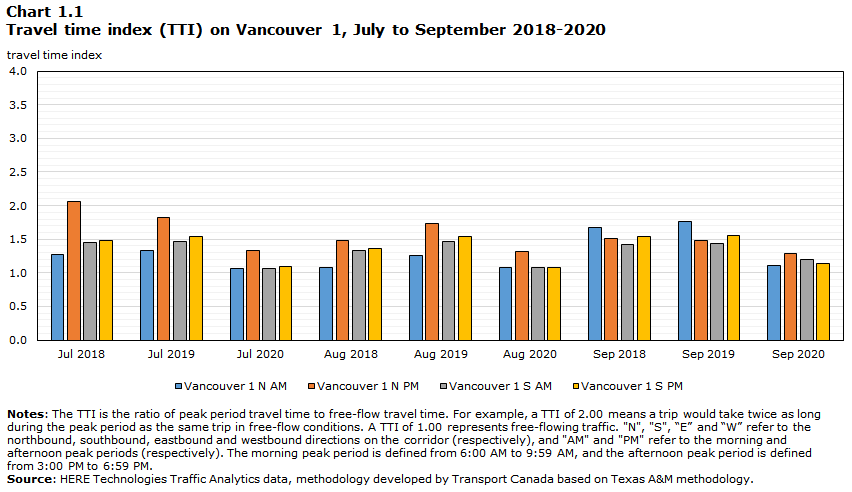
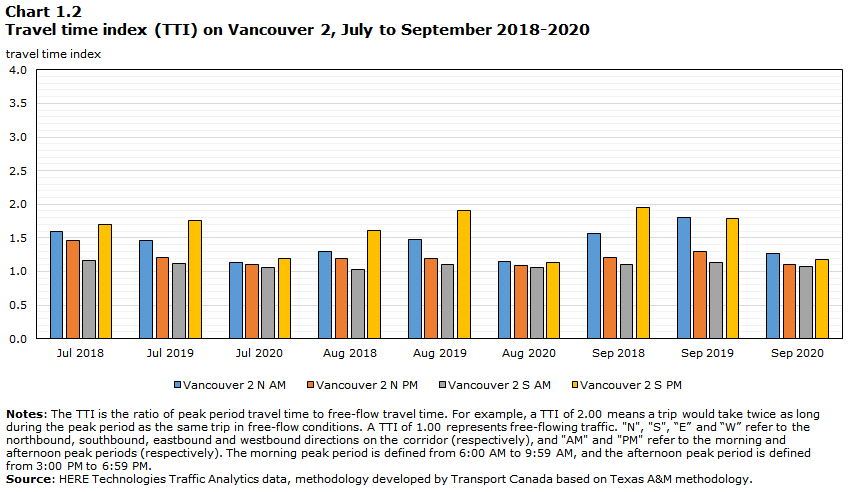
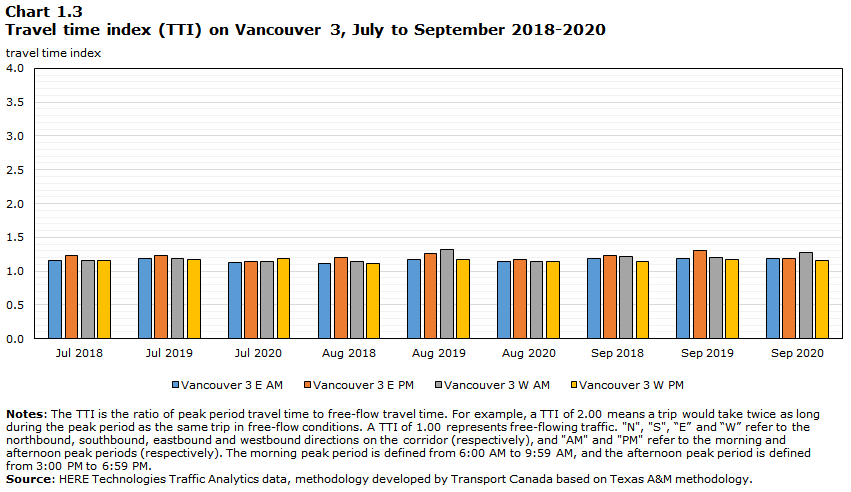
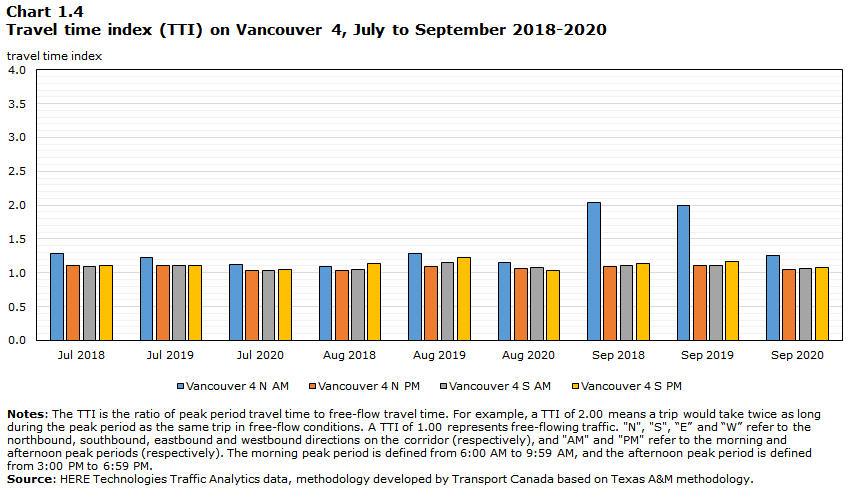
Data table for Charts 1.1, 1.2, 1.3 and 1.4
| Corridor | Direction | Peak period | Jul 2018 | Jul 2019 | Jul 2020 | Aug 2018 | Aug 2019 | Aug 2020 | Sep 2018 | Sep 2019 | Sep 2020 |
|---|---|---|---|---|---|---|---|---|---|---|---|
| Vancouver 1 | N | AM | 1.27 | 1.33 | 1.07 | 1.09 | 1.26 | 1.08 | 1.68 | 1.76 | 1.11 |
| PM | 2.06 | 1.82 | 1.33 | 1.48 | 1.73 | 1.31 | 1.52 | 1.48 | 1.28 | ||
| S | AM | 1.46 | 1.46 | 1.06 | 1.33 | 1.47 | 1.09 | 1.42 | 1.44 | 1.19 | |
| PM | 1.49 | 1.55 | 1.10 | 1.36 | 1.54 | 1.08 | 1.54 | 1.56 | 1.14 | ||
| Vancouver 2 | N | AM | 1.59 | 1.45 | 1.13 | 1.29 | 1.48 | 1.15 | 1.57 | 1.81 | 1.27 |
| PM | 1.46 | 1.21 | 1.10 | 1.20 | 1.19 | 1.09 | 1.21 | 1.29 | 1.10 | ||
| S | AM | 1.16 | 1.12 | 1.06 | 1.03 | 1.11 | 1.07 | 1.10 | 1.13 | 1.07 | |
| PM | 1.70 | 1.76 | 1.19 | 1.61 | 1.91 | 1.13 | 1.95 | 1.78 | 1.18 | ||
| Vancouver 3 | E | AM | 1.15 | 1.18 | 1.13 | 1.12 | 1.17 | 1.14 | 1.18 | 1.18 | 1.19 |
| PM | 1.23 | 1.23 | 1.15 | 1.21 | 1.25 | 1.17 | 1.23 | 1.30 | 1.18 | ||
| W | AM | 1.16 | 1.19 | 1.14 | 1.14 | 1.32 | 1.14 | 1.22 | 1.20 | 1.28 | |
| PM | 1.15 | 1.17 | 1.19 | 1.12 | 1.17 | 1.14 | 1.14 | 1.18 | 1.16 | ||
| Vancouver 4 | N | AM | 1.28 | 1.23 | 1.12 | 1.10 | 1.29 | 1.15 | 2.05 | 2.00 | 1.25 |
| PM | 1.10 | 1.10 | 1.04 | 1.04 | 1.09 | 1.06 | 1.09 | 1.11 | 1.05 | ||
| S | AM | 1.09 | 1.10 | 1.04 | 1.05 | 1.16 | 1.07 | 1.11 | 1.11 | 1.06 | |
| PM | 1.11 | 1.10 | 1.06 | 1.13 | 1.23 | 1.04 | 1.13 | 1.16 | 1.07 | ||
| Notes: The TTI is the ratio of peak period travel time to free-flow travel time. For example, a TTI of 2.00 means a trip would take twice as long during the peak period as the same trip in free-flow conditions. A TTI of 1.00 represents free-flowing traffic. "N", "S", “E” and “W” refer to the northbound, southbound, eastbound and westbound directions on the corridor (respectively), and "AM" and "PM" refer to the morning and afternoon peak periods (respectively). The morning peak period is defined from 6:00 AM to 9:59 AM, and the afternoon peak period is defined from 3:00 PM to 6:59 PM. Source: HERE Technologies Traffic Analytics data, methodology developed by Transport Canada based on Texas A&M methodology. |